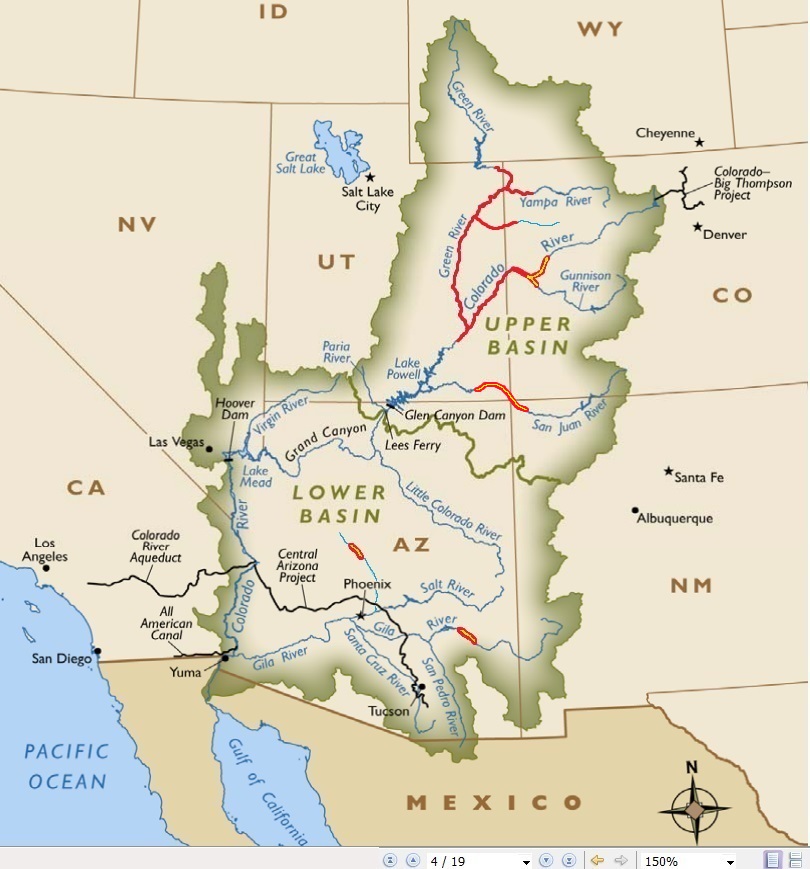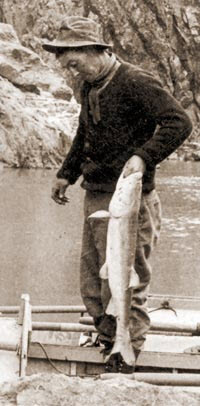Colorado Pikeminnow
|
|
Colorado pikeminnow (Ptychocheilus lucius) The Colorado pikeminnow is the largest minnow in North America and is an endangered, native fish of the Colorado River thought to have evolved more than 3 million years ago. Called the “white salmon” by early settlers due to its migratory behavior, the Colorado pikeminnow has a torpedo-shaped body and a large, toothless mouth. It has an olive-green and gold back and a silvery-white belly. Colorado pikeminnow can live up to 40 years and were historically known to grow to nearly 6 feet long and weight 80 pounds. Today, researchers commonly see adult Colorado pikeminnow that are 2 to 3 feet in length. Colorado pikeminnow are known for long-distance spawning migrations of more than 200 miles in late spring and early summer. They are capable of reproducing at 5 to 7 years of age. Young Colorado pikeminnow feed on insects and plankton, whereas adults feed mostly on fish. The Colorado pikeminnow was a valued food source by early settlers. Dale Stewart of Vernal, Utah, caught a 25-pound Colorado pikeminnow in 1937. He reminisced about the fish’s food value. “You can see how you cut steaks off that thing,” he said. “I remember a fish like that really was a harvest, and it produced not just one meal, but quite a few meals for the family.” (Also see: Historical perspective.) The Colorado pikeminnow was the Colorado River’s top predator in the early 1900s and has been known to take anglers’ bait in the form of mice, birds, and even small rabbits, despite that its only “teeth” are found on a bony, circular structure located deep within its throat. This fish also readily strikes lures and live bait used to catch sport fish or nonnative fish. [1] |
| Online training |
Fish Species of the Colorado River in Lower Glen Canyon and Grand Canyon |
Fish photos, information, and maps |
|---|
|
|

